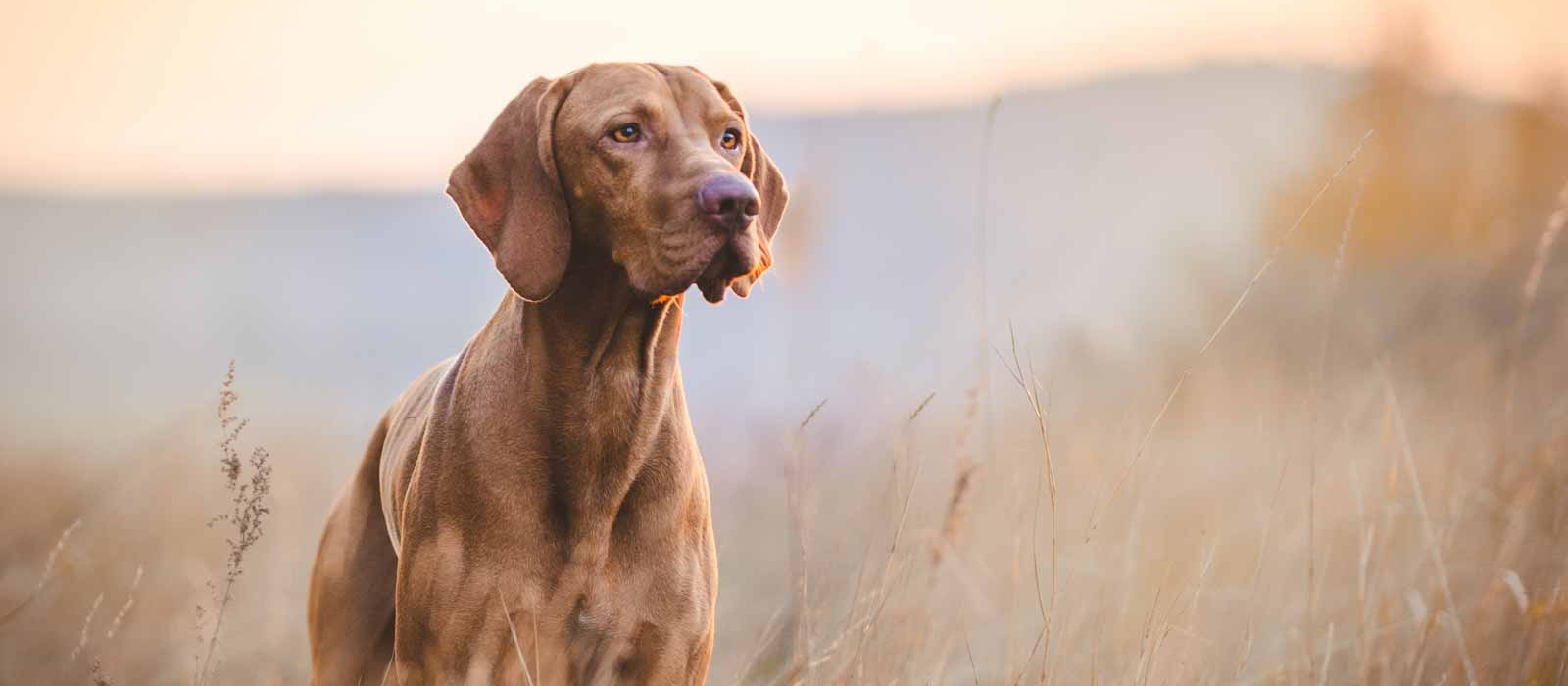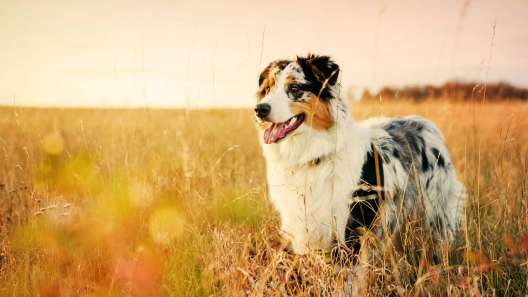-
Activity Level:
high
-
Shedding Level:
moderate
-
Grooming Level:
low
-
Trainability:
high
-
Good for Novice Owners:
high
-
Adaptability:
moderate
-
Kid/Pet Friendly:
often
-
Prey Drive:
high
-
Watchdog:
aware
- Average Size: Medium
- Average Lifespan: 12-14 years
- Registered?: aca, akc
Vizsla Dog Breed Information
Overview
Temperament
Adaptability
Health
Owner Experience
Grooming
Activity Level
Size
Life Span
Did You Know?
The “Velcro Vizsla” is a vibrant and loving family dog or hunting dog. Also known as the Hungarian Pointer, this dog breed has a long history dating back to 10th century Hungary. Their ancestors were nimble red dogs that ran alongside Magyar horseback riders as they rampaged across Western Europe before settling in the region that is now Hungary.
Hungarian warlords and nobles refined these dogs and developed what we now know as the Vizsla. The modern Vizsla was bred specifically for speed, stamina, and endurance in addition to their excellent scenting skills and versatility. They were built to be versatile, all-purpose hunting dogs that could traverse a variety of rugged terrain and spend long days in the field.
Although they are considered a Pointer type, they also excel at retrieval and are particularly well-suited for rabbits and upland game as well as retrieving waterfowl. The Vizsla was used in the development of other dog breeds, such as the Weimaraner and German Shorthaired Pointer.
Like many other breeds, the Vizsla was almost extinct after World War I. The first Vizsla to come to the United States arrived in 1950 after being smuggled out of Hungary by a U.S. State Department employee. The American Kennel Club recognized the Vizsla in 1960 as a member of the Sporting Group.
The Vizsla is one of the most affectionate dog breeds. They love nothing more than being with their favorite people and tend to stick nearby. So much so, that they earned the nickname “Velcro Vizsla. This also makes a great family dog.
Well-socialized, they tend to be mild-mannered and get along fantastically with children and other dogs. They are considered one of the kid-friendly dog breeds and even tend to be open and friendly with strangers. They also don’t tend to bark a lot unless you have trained them into it, but they will generally bark to alert you.
As a hunting breed, they tend to have a high prey drive and urge to chase. Although they can do well with smaller animals in the family that they have been raised with, they usually require some extra socialization and training when it comes to smaller pets. They will also likely retain that urge to chase for animals outside of the family.
The Vizsla is a moderately adaptable dog breed. Their exuberance and high energy mean they are better suited to larger homes with fenced yards where they can run. They can adapt to apartment living, but you will have to dedicate a substantial amount of time every day to give them the daily activity, attention, and mental stimulation they need.
They do well in most climates and thrive in moderate climates. As with any dog, they are sensitive to heat. Their short coat also means they can get cold easily. You may need to have some winter dog products on hand to help them stay warm and protect their paws while out on walks in the cold.
With their Velcro dog reputation, it should come as no surprise that one of the facts about Vizslas is that they do not like to be left alone. Not only do they crave companionship and affection, but they also have a lot of energy and get bored easily. They can become stressed when left alone and can become destructive if they do not get enough exercise or get too bored.
Potential health concerns to be aware of in the Vizsla can include epilepsy, sebaceous adenitis, eye disorders, particularly entropion or melanosis, and hip dysplasia. They can also be prone to seasonal allergies and ear infections. Good breeding practices and the health of the parents make a big difference in the health of Vizsla puppies.
Reputable breeders will screen their dogs before breeding to ensure they are not passing on preventable issues to puppies. Make sure you talk to the breeder about the health and genetic history of the parents. You can also ask about any health tests or clearances that have been done. The Vizsla Club of America recommends a hip evaluation, an ophthalmologist evaluation, and a thyroid evaluation at a minimum.
Vizslas are highly intelligent dogs that pick up on things quickly and are generally eager to please. They have a lot of energy, get bored easily, need a job to do, and can be very naturally curious, which can be challenging for first-time dog owners to handle alone. Novice dog owners can do well with this breed, but puppy training classes are recommended to help keep training consistent.
Untrained or trained poorly, Vizslas can be difficult dogs and can get out of hand easily. Their intelligence and curiosity also mean they can find very creative ways to entertain themselves. It’s important to socialize and train these dogs early and consistently throughout their lives.
The Vizsla has a short, sleek dog coat type that will shed moderately year-round. Weekly brushing or brushing a few times a week and the occasional bath as needed are usually enough for this breed. A rubber brush or a grooming glove are good types of dog grooming brushes to have on hand.
They don’t tend to carry a strong “dog” odor, and usually only require a bath if they have been swimming or have gotten into something. A damp cloth or wipes can be useful for a quick refresh or spot cleaning between baths if needed. In addition to coat care, you will also need to take care of your Vizsla’s nails, ears, and teeth.
Nail trims once or twice a month are usually enough to keep nails from growing too long. Checking ears weekly and carefully cleaning them as needed can help prevent ear infections. Daily dental care for dogs, along with cleanings at the vet when needed, can help prevent painful dental diseases later in life.
Pure energy – that is the Vizsla. These sporting dogs were bred to be active hunting dogs and they require an active lifestyle to be happy and healthy. Daily walks plus some playtime, time to run, and other activities are usually sufficient, but they will likely be up for more activity if you are.
They are one of the sturdy dog breeds for outdoor adventures. Swimming and easier hiking trails tend to be good low-impact activities. Once puppies finish growing and the vet has cleared them for higher-impact activities, you can try a lot of things with them.
Vizslas tend to enjoy running. They are built for trail running and can even run alongside you as you bike! They also need to run hard off-leash on a regular basis. Until you improve your dog’s recall training to where they respond consistently and reliably outside of secure areas, a fenced off-leash dog park can be a great option.
Vizslas are excellent hunting dogs and are also versatile athletes. They tend to excel at hunting tests and field trials as well as a variety of dog sports, like lure coursing, tracking, scent work, agility, rally, dock diving, and more.
Fully-grown Vizslas usually stand 21-24 inches tall and weigh 44-60 pounds. On average, females stand 21-23 inches tall and weigh 44-55 pounds while males stand 22-24 inches tall and weigh 55-60 pounds.
Vizslas generally live for 12-14 years on average.
Chartay was the first quintuple AKC champion and was a Vizsla. She was the first dog in AKC history to win championships in five different dog sports – Conformation Champion, Field Champion, Amateur Field Champion, Obedience Trail Champion, and Master Agility Champion. Chartay passed away in 2004, but her legacy lives on. In 2006, her portrait was unveiled at the AKC Operations Center in Raleigh, NC.









